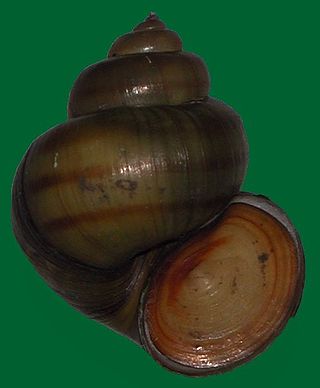A genus–differentia definition is a type of intensional definition, and it is composed of two parts:
- a genus : An existing definition that serves as a portion of the new definition; all definitions with the same genus are considered members of that genus.
- the differentia: The portion of the definition that is not provided by the genus.

The Percolozoa are a group of colourless, non-photosynthetic Excavata, including many that can transform between amoeboid, flagellate, and cyst stages.

The lagomorphs are the members of the taxonomic order Lagomorpha, of which there are two living families: the Leporidae and the Ochotonidae (pikas). There are 110 recent species of lagomorph of which 109 are extant, including 10 genera of rabbits, 1 genus of hare and 1 genus of pika . The name of the order is derived from the Ancient Greek lagos + morphē.

Phyllodactylus is a genus of geckos distributed in South America and Central America, and as far north as the southern United States. They are commonly known as "leaf-toed geckos" in their native range, and otherwise as American leaf-toed geckos to distinguish them from unrelated genera with similar feet.
In the scientific name of organisms, basionym or basyonym means the original name on which a new name is based; the author citation of the new name should include the authors of the basionym in parentheses. The term "basionym" is used in both botany and zoology. In zoology, alternate terms such as original combination or protonym are sometimes used instead. Bacteriology uses a similar term, basonym, spelled without an i.

The Lamnidae are the family of mackerel sharks known as white sharks. They are large, fast-swimming predatory fish found in oceans worldwide, though prefer environments with colder water. The name of the family is formed from the Greek word lamna, which means "fish of prey", and was derived from the Greek legendary creature, the Lamia.

Heteroceridae, the variegated mud-loving beetles, are a widespread and relatively common family of beetles found on every continent except for Antarctica.

Viviparidae, sometimes known as the river snails or mystery snails, are a family of large operculate freshwater snails, aquatic gastropod mollusks.

Nucula is a genus of very small saltwater clams. They are part of the family Nuculidae.

Archaeonectrus is an extinct genus of pliosaur from the Early Jurassic (Sinemurian) of what is now southeastern England. The type species is Archaeonectrusrostratus, first named by Sir Richard Owen in 1865, which was moved to its own genus by N.I. Novozhilov in 1964. It was a relatively small plesiosaur, measuring 3.4–3.67 m (11.2–12.0 ft) long.

Alexander Hanchett Smith was an American mycologist known for his extensive contributions to the taxonomy and phylogeny of the higher fungi, especially the agarics.

The golden grouper, also known as the pink grouper or Powell's grouper, is a species of marine ray-finned fish, a grouper from the subfamily Epinephelinae which is part of the family Serranidae, which also includes the anthias and sea basses. It is found in the eastern Indian Ocean and Western Pacific Ocean.

Asiatosuchus is an extinct genus of crocodyloid crocodilians that lived in Eurasia during the Paleogene. Many Paleogene crocodilians from Europe and Asia have been attributed to Asiatosuchus since the genus was named in 1940. These species have a generalized crocodilian morphology typified by flat, triangular skulls. The feature that traditionally united these species under the genus Asiatosuchus is a broad connection or symphysis between the two halves of the lower jaw. Recent studies of the evolutionary relationships of early crocodilians along with closer examinations of the morphology of fossil specimens suggest that only the first named species of Asiatosuchus, A. grangeri from the Eocene of Mongolia, belongs in the genus. Most species are now regarded as nomina dubia or "dubious names", meaning that their type specimens lack the unique anatomical features necessary to justify their classification as distinct species. Other species such as "A." germanicus and "A." depressifrons are still considered valid species, but they do not form an evolutionary grouping with A. grangeri that would warrant them being placed together in the genus Asiatosuchus.

Anochetus is a genus of small, carnivorous ants found in the tropics and subtropics throughout the world.

Gemmula, common name the gem turrids, is a genus of sea snails, marine gastropod mollusks in the family Turridae, the turrids.
Metajapyx is a genus of forcepstails in the family Japygidae. There are more than 30 described species in Metajapyx.

Trigonostoma is a genus of sea snails, marine gastropod mollusks in the family Cancellariidae, the nutmeg snails.
Klossiella is a genus of parasitic alveolates of the phylum Apicomplexa. Species in this genus infect the renal tract of mammals and intestinal tract of snakes.
John Ernest "Jack" Randall was an American ichthyologist and a leading authority on coral reef fishes. Randall described over 800 species and authored 11 books and over 900 scientific papers and popular articles. He spent most of his career working in Hawaii. He died in April 2020 at the age of 95.

Granofilosea is a class of cercozoan protists in the subphylum Reticulofilosa. Out of the three groups that were traditionally considered heliozoans: the heliomonads, gymnosphaerids and desmothoracids, the latter were recently grouped into this new class.














